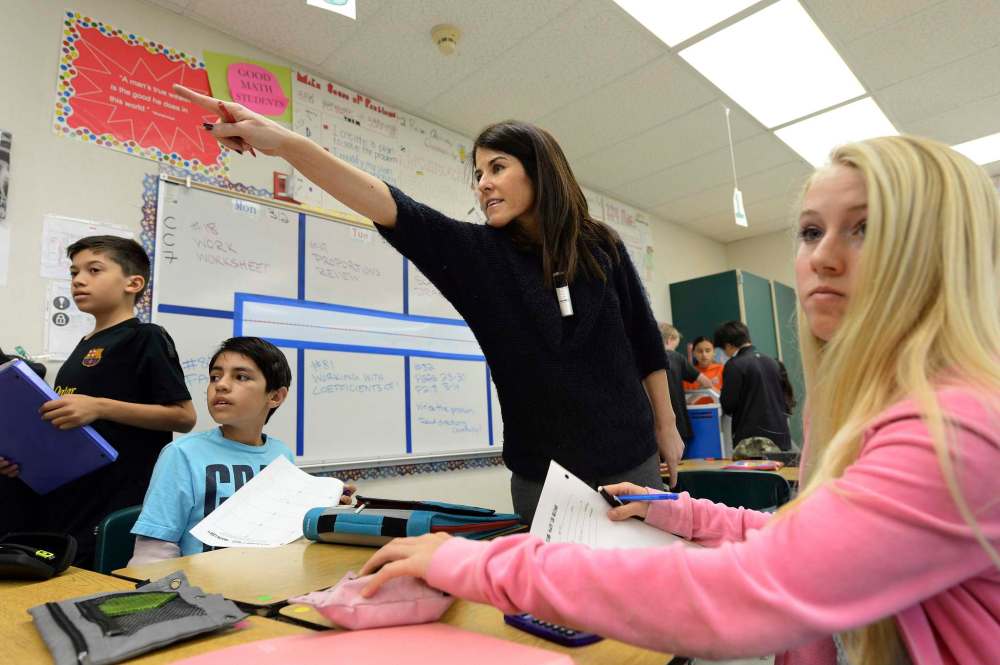Teaching math for today’s world
Advertisement
Read this article for free:
or
Already have an account? Log in here »
To continue reading, please subscribe:
Monthly Digital Subscription
$0 for the first 4 weeks*
- Enjoy unlimited reading on winnipegfreepress.com
- Read the E-Edition, our digital replica newspaper
- Access News Break, our award-winning app
- Play interactive puzzles
*No charge for 4 weeks then price increases to the regular rate of $19.00 plus GST every four weeks. Offer available to new and qualified returning subscribers only. Cancel any time.
Monthly Digital Subscription
$4.75/week*
- Enjoy unlimited reading on winnipegfreepress.com
- Read the E-Edition, our digital replica newspaper
- Access News Break, our award-winning app
- Play interactive puzzles
*Billed as $19 plus GST every four weeks. Cancel any time.
To continue reading, please subscribe:
Add Free Press access to your Brandon Sun subscription for only an additional
$1 for the first 4 weeks*
*Your next subscription payment will increase by $1.00 and you will be charged $16.99 plus GST for four weeks. After four weeks, your payment will increase to $23.99 plus GST every four weeks.
Read unlimited articles for free today:
or
Already have an account? Log in here »
Hey there, time traveller!
This article was published 23/02/2017 (3186 days ago), so information in it may no longer be current.
Hands up if you learned to ride a bike by reading a manual. No? How about fixing engines, playing the piano or reading by being lectured about it?
Of course not. If you have learned to do these things, it was through an active involvement in the process. You played with it, practised, tried different approaches and, in the end, developed a deep understanding of whatever the task was.
It would be ridiculous to say to a class of children learning to read, “OK. We are all going to read the same book at the same pace, finish at the same time, and get the same meaning out of it.” That this is our approach to math instruction says a great deal about how we see the subject: an inert collection of facts that reside with the teacher to be passed on to children. There are multiple problems with this outlook, chief among them being the transformation of the child into a passive learner.

The other, larger problem is that it promotes a stagnant view of the subject that is not only stifling to the learner but woefully out of touch with the place of math in today’s world. In 1970, Fortune 500 magazine surveyed top businesses in North America as to the dozen or so qualities they were seeking in potential employees. Not surprisingly, the top three were reading, writing and computation. In a similar survey in 1999, there was a marked change. All three were now at the bottom. Bear in mind that the second survey is 18 years old, which forces us to ask the question: if this survey were taken today, would those three even be on the list?
Is math any less important today? Quite the opposite; it has never had greater value. Teaching must reflect what we know to be important in today’s world, not the one that existed 40 years ago. Paper-and-pencil algorithmic computation simply doesn’t have the importance it once did. Number sense is vital, as is conceptual understanding. Perhaps even more important is the ability to reason, to generalize and to work collaboratively on problems.
Improvement of math education is everyone’s concern. This is not misplaced, and, regardless of how well we think we are doing, there is always room for improvement. However, to lay the blame at the feet of discovery learning, as Anna Stokke does, is both unfair and misleading. As I have said many times, to do so gives the impression that low math scores are the result of a constructivist, discovery-learning approach. That is simply untrue.
Very few classrooms approach instruction in this way. The vast majority employ a traditional, teacher-directed approach, one that hasn’t served generations particularly well. This is not a new revelation. The failings have risen to the surface many times over the years. For example, the Second World War brought this to light when it became apparent large numbers of recruits lacked the math necessary to do navigation, gunnery and so on.
One can find quotes over the past century and a half bemoaning the failure of students to learn, truly learn, using a traditional manner of education. This type of teaching has not served legions of students well.
There’s a reason we no longer teach Latin in our schools. It was important in bygone years, but now the need for it has vanished. It’s time to wake up to the same reality when it comes to the teaching of math.
Neil Dempsey recently retired after a career in education in classrooms, divisional positions and school administration. He is now a doctoral student, teaching at university and working with a number of schools in Seven Oaks School Division.

